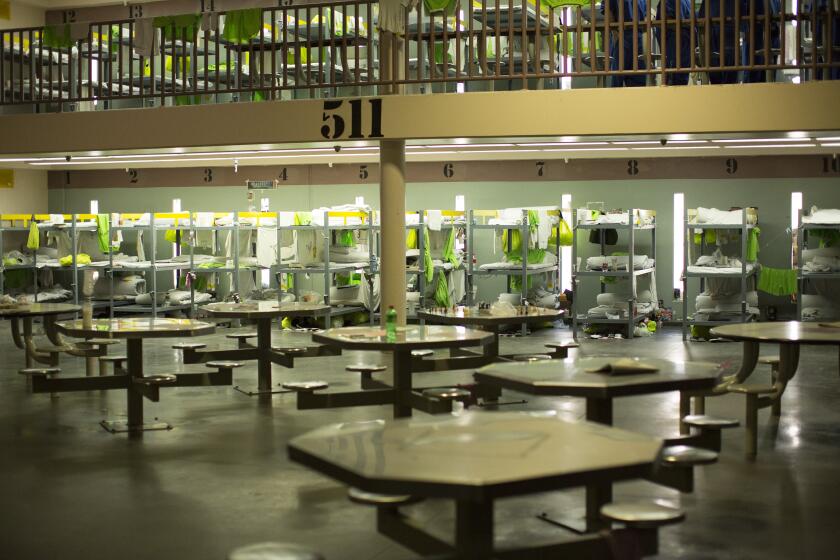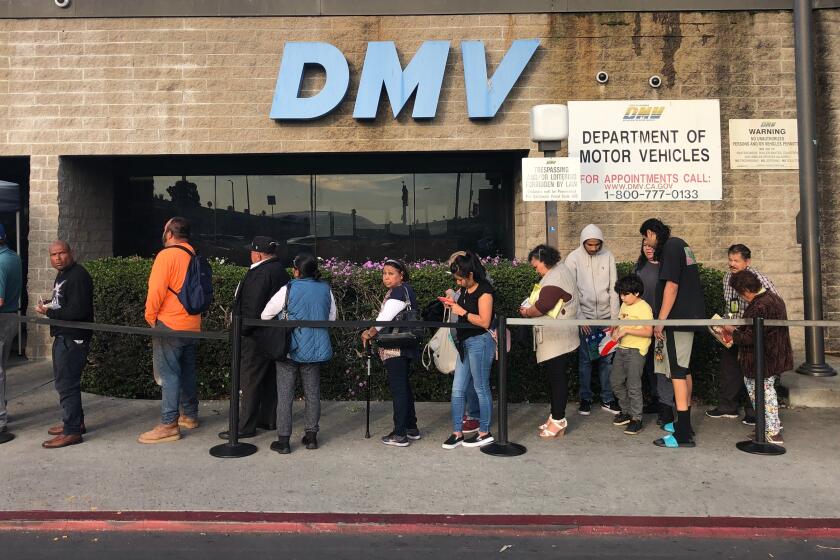Boyle Heights celebrates its ethnic diversity
- Share via
When Margaret Fujioka was taken to a remote desert internment camp after Japan’s 1941 attack on Pearl Harbor, Jesus and Carmen Garcia stepped up as faithful neighbors to guard her home. The immigrants from Mexico couldn’t always fully communicate with Fujioka’s parents from Japan, but their fast friendship transcended cultural differences.
And when the war ended and Fujioka returned, Jewish neighbor Jane Leighton offered her a house-cleaning job. Other Japanese Americans encountered deep hostility in other parts of the city as they tried to reassemble their shattered lives. But Jews like Leighton, Fujioka mused recently, seemed to feel empathy for their Japanese American neighbors and reached out to help.
What else would you expect? After all, this was Boyle Heights in the 1940s, a place often described as one of the largest and earliest showcases for multicultural harmony in Los Angeles.
The three ethnic groups that flourished in Boyle Heights in the first half of the 20th century, as racist housing covenants kept them out of other areas, have largely gone their separate ways. Boyle Heights residents today are almost entirely Latino, mostly of Mexican heritage.
But the yearning to rekindle those multicultural connections -- and offer lessons in getting along to the larger community -- has sparked a new initiative by the consulates of Israel, Japan and Mexico to share memories, celebrate culture and strengthen friendships in Boyle Heights.
“We want to revive this experience of togetherness, because this is a city of immigrants, and that is the power and strength of Los Angeles,” said Jacob Dayan, consul general of Israel in Los Angeles.
The three groups unveiled their first event last week, featuring a symposium to explore their joint history and a shared culinary experience sampling Japanese fish cake stew, several yellowtail dishes and 10 varieties of sake. The event was hosted by Junichi Ihara, Japanese consul general in Los Angeles, who launched the idea for the initiative.
Ihara said he was inspired to act after U.S. Rep. Lucille Roybal-Allard, (D-East Los Angeles), told him about the multicultural history of Boyle Heights in a conversation last year. In one of the neighborhood’s most renowned acts, voters of various ethnic stripes rallied in 1949 to elect a Mexican American to integrate the all-white Los Angeles City Council. That man was Roybal-Allard’s father: Edward R. Roybal.
Materials from the Japanese American National Museum’s 2002 exhibit about Boyle Heights and the 1996 documentary “Meet Me at Brooklyn and Soto,” about Jewish life in the area, helped Ihara gain a fuller understanding of the community and its history. He reached out to his counterparts from Mexico and Israel to brainstorm ways to resurrect the historic bonds.
“I was fascinated by the history as the first multiracial coalition to make a difference in Los Angeles,” Ihara said.
The neighborhood began as a ranching community and blossomed into an urban enclave in the late 1800s, when bridges were built over the Los Angeles River to allow railway cars to carry workers from city jobs to Boyle Heights residences, according to George J. Sanchez, a USC professor of American studies and ethnicity and history. The area was named after Andrew Boyle, an Irish immigrant.
In the early 20th century, waves of immigrants began populating the area, including members of the Russian Molokans, a Protestant sect, fleeing persecution and military conscription; Jewish and Italian migrants fleeing World War I; and Japanese from Northern California looking for new opportunities after the 1906 earthquake flattened San Francisco. Mexicans, who had always been in the area, increased their numbers as migrants escaped the turmoil of revolution in their homeland.
Not everyone celebrated the diversity. In an era of racist housing covenants, the neighborhood was viewed with deep suspicion by the U.S. government. In a 1939 federal housing report, Boyle Heights was described as “hopelessly heterogeneous with diverse and subversive racial elements on almost every single block,” Sanchez said.
Through the Great Depression, the Mexican Repatriation, the Japanese American internment and city projects that sliced the neighborhood with several freeways, the community hung together, neighbors say.
Today, remnants of the multiethnic past are visible to close observers, among them the stars of David on the Japanese American senior home on Boyle Avenue, where the 92-year-old Fujioka lives and where she is cared for by Connie Munoz, a Mexico-born nursing aide. Others include the bonsai trees in the yards of Mexican immigrants, the brick Breed Street Shul around the corner from street vendors selling churros, the Japanese churches and language school off 1st and Saratoga streets.
And the memories of a place and time that stir passion and nostalgia are in the stories that were shared at the symposium, which drew nearly 200 people.
Elizabeth Fine Ginsburg was editor of the Roosevelt High School newspaper in 1941 when one of her best friends, Susie Hattori, was taken to an internment camp. Ginsburg wrote a scathing editorial against the internment and visited Hattori at the temporary assembly center at the Santa Anita racetracks.
“It was shocking: They were in horse stalls,” she recalled. “We felt it was a terrible injustice.”
Japanese American businessman Jon Kaji described lighter moments: running around the neighborhood with Mexican American friends learning Spanish and eating icy raspado and sweet pan dulce.
His grandfather, Kikuwo Tashiro, led an effort to build the city’s first Japanese hospital in Boyle Heights and successfully sued the state when it would not grant them corporate status. The venture was a forerunner to Keiro Senior HealthCare, the nation’s largest Japanese American healthcare provider, built on the site of the Jewish Home for the Aged on Boyle Avenue.
By the time writer Josefina Lopez arrived in Boyle Heights from Mexico as a girl in 1975, it was overwhelmingly Latino.
The area had a bleak reputation as a crime-ridden hot spot for gangs and drugs, a place from which ambitious Latinos like her aspired to escape with education and hard work, she said.
But she was drawn back to the neighborhood in 2000. Now, as founder and artistic director for the Casa 0101 Theater, Lopez said she hopes to write a play celebrating the neighborhood’s ethnic bonds.
“I want to recapture that energy and the incredible tolerance for all races,” she said.
As their next step, the consulates are discussing a possible film festival and family day featuring cultural activities.
And other collaborative projects are underway. The Jewish community has launched a $5-million fundraising campaign to renovate the Breed Street Shul, once the largest synagogue for Los Angeles Jews, as a center for tutoring, free legal services and other programs for the largely Latino community, Dayan said.
As she recalled her own childhood memories of visiting one ethnic community after another with her father, Roybal-Allard said at the symposium that the past offered powerful lessons at a time of deep political divisiveness.
“Boyle Heights is really an example of where we want to be today,” Roybal-Allard said.
teresa.watanabe@latimes.com
More to Read
Sign up for Essential California
The most important California stories and recommendations in your inbox every morning.
You may occasionally receive promotional content from the Los Angeles Times.











